Managing Human-Wildlife Interactions: Woodpeckers
ID
CNRE-147NP
Introduction
Our attention to the presence of a woodpecker often arises when these birds are actively searching for food. Once we hear the characteristic pecking sounds a woodpecker makes as it uses its bill to chip away the bark or exposed wood of a tree, we can’t help but notice these often colorful but otherwise secretive birds.
Sometimes, though, that rapping sound comes as a woodpecker investigates the wood siding or trim on your home. In some cases, the woodpecker might have detected the presence of wood-boring or other insects hidden under or within the siding. To a woodpecker, the sheathing on your home simply represents a different type of bark that is preventing it from reaching the food it wants. In other cases, because your home is located within the territory a woodpecker has established, it may use parts of the building that, when pecked, create an effective sounding board. Using these resonant surfaces, the woodpecker will hammer out messages to either attract a mate or ward off potential competitors.
Alternatively, in fewer but more serious situations, a woodpecker might actually drill all the way through the siding to create a nesting cavity in which it will raise its brood. Regardless of the reason, the economic and psychological costs associated with these types of damage can range from minor, seasonal annoyances to larger problems where siding or structural elements have to be repaired or replaced. Certain species of woodpeckers also cause significant economic hardship for utility service providers when a woodpecker’s pecking activity weakens or destroys wooden electric power and telephone support poles.
For woodlot owners, timber quality and economic value can potentially be reduced by damage caused by woodpeckers, though this is normally restricted to individual trees rather than entire stands.
Finally, although the physical appearance and potential health of some woody landscape plants can be degraded by sapsuckers as a result of their patterned drilling, damage from this foraging activity is largely aesthetic and rarely leads to the death of the affected ornamentals.
This publication provides information to improve readers’ knowledge and understanding of these common birds and discusses various options designed to minimize negative consequences from our interactions with woodpeckers in Virginia.
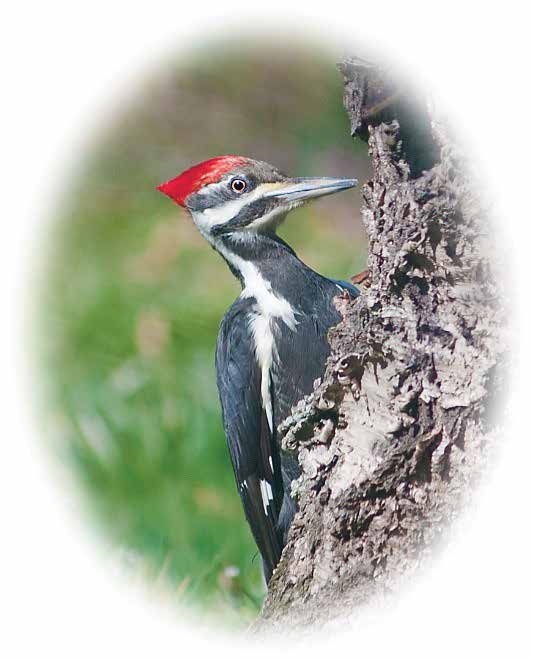
Figure 1: Pileated woodpecker (Dryocopus pileatus). (Photo courtesy of Harold Jerrell)
Biology and Life History
The Commonwealth of Virginia is home to eight members of the woodpecker family (Picidae). Among these, the red-cockaded woodpecker (Dryobates borealis) is listed as both a federal and state endangered species. This species is typically found only in a small number of locations in far southeastern Virginia. Other woodpeckers found in Virginia include the following: the downy woodpecker (Dryobates pubescens), the hairy woodpecker (Dryobates villosus), the red-headed woodpecker (Melanerpes erythrocephalus), the redbellied woodpecker (Melanerpes carolinus), the pileated woodpecker (Dryocopus pileatus), the northern flicker (Colaptes auratus), and the yellow-bellied sapsucker (Sphyrapicus varius).
Sapsuckers that inhabit higher elevation sections of Virginia’s western mountains can remain year-round, but many are present only seasonally. Migrants from areas farther north drift south to spend the winter here in Virginia, but they head north in early spring to return to their normal breeding areas. All the other woodpecker species are considered resident, and although they may move short distances or disperse themselves across the state, they do not make long-distance, energy demanding flights from northern breeding areas to southern wintering habitats like true migratory species (e.g., waterfowl). Because most woodpeckers are resident year-round, the potential for conflict may be greater than that encountered with migratory species that are present for only part of the year.
Size among woodpecker species ranges from about 6 1/2 inches tall in the diminutive downy woodpecker to as much as 17-20 inches tall in the large pileated woodpecker. Overall, our resident woodpeckers are characterized either by various patterns of black and white (some with red on or near the head) or a mix of gold/yellow, brown, white, and black, often with small patches of red. Despite this considerable variation in appearance among the woodpecker species, two species—the downy and hairy woodpeckers — can be difficult to distinguish. The hairy woodpecker is larger overall and has a noticeably longer and stouter bill than the downy woodpecker.
The toes of all woodpeckers are arranged uniquely when compared with most other common birds: two toes point forward, and two toes point backward (called “zygodactyl feet”) (fig. 4). This arrangement aids them when they cling to the trunk and branches of a tree. All woodpeckers possess stiff tail feathers, which they use as a brace or support when climbing or clinging to the tree.
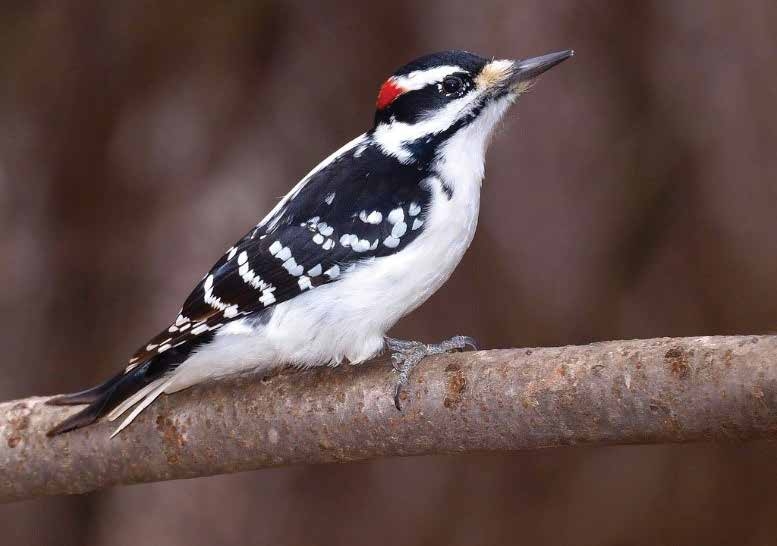
Figure 2: Hairy woodpecker (Dryobates villosus). (Photo is licensed under CC BY-NC-ND 2.0 Eric Bégin)
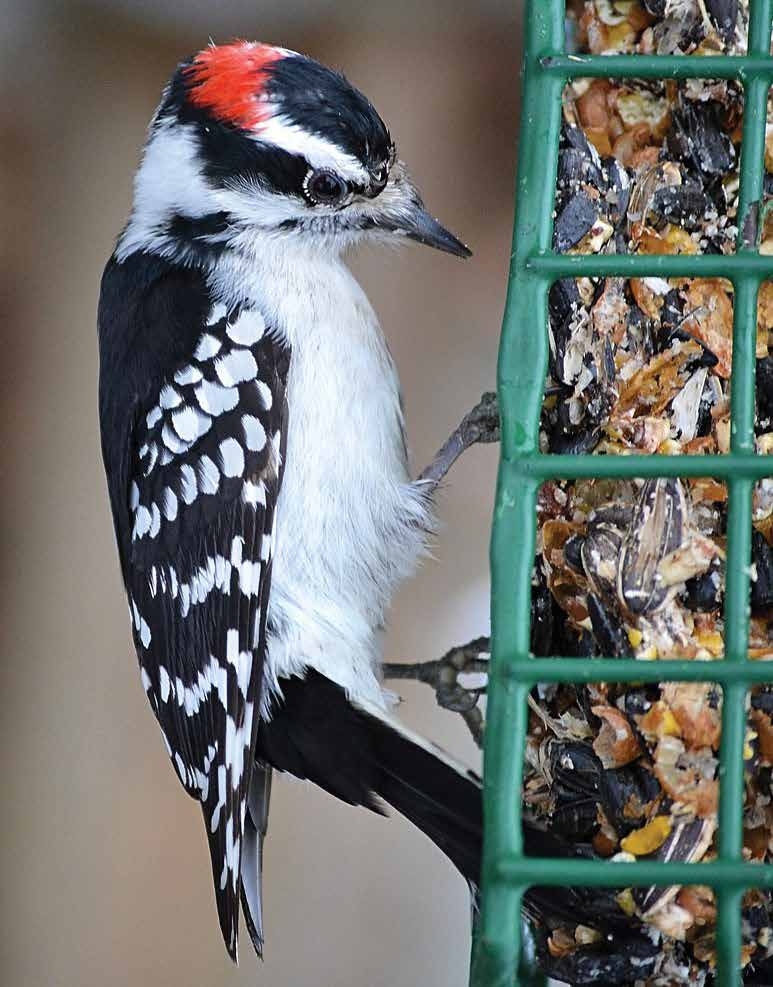
Figure 3: Downy woodpecker (Dryobates pubescens). (Photo is licensed under CC BY-NC-ND 2.0 DaPuglet)
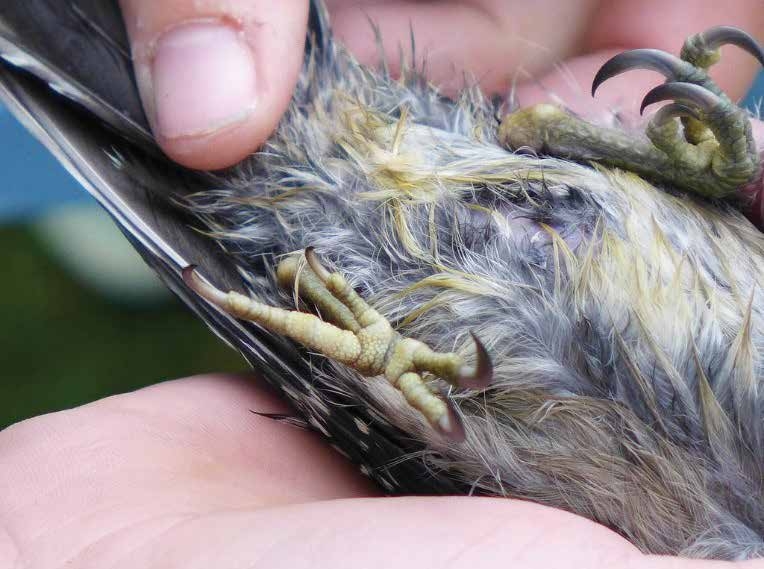
Figure 4: Photo of a woodpecker’s zygodactyl feet. (Photo is licensed under CC BY-NC-ND 2.0 Kate StJohn Birdblog)
Female woodpeckers typically lay three to six eggs that will hatch in approximately 14–20 days. Given this short incubation period, many species of woodpeckers produce multiple broods each year. Woodpeckers are classified as requisite cavity-nesters, and as such, they typically create a new cavity with each breeding effort.
In some species, the excavation of a new cavity is an essential part of courtship and pair-bonding among mates. For species that do not demonstrate this critical courtship behavior, a breeding pair will occasionally use an abandoned cavity created by another woodpecker.
Less frequently, they might find a naturally occurring void in a tree (such as an old knot hole or area of decay) in which to rear their brood. Where suitable conditions for cavity creation do not exist, woodpeckers may resort to using an artificial cavity, such as a birdhouse. With the exception of the red-cockaded woodpecker and the yellow-bellied sapsucker (both of which use live trees), the presence of dead or dying trees that offer opportunities for cavity excavation and also harbor potential food (e.g., wood-boring insects) is considered an essential component of viable woodpecker habitat. It is important to note that, after a brood successfully fledges, the now abandoned woodpecker cavity will be used by a host of other wildlife species, such as mice, flying squirrels, bats, and many other birds that also rely on cavities as nest or den sites, but have no way to create their own.
As the breeding season approaches, the male woodpecker establishes a territory that includes a potential nest site and reliable food resources. Females judge the quality of prospective mates by, among other characteristics, the quality and location of the nesting cavity and the resources provided within the territory. The most successful males are those who locate and defend productive sites from competitors.
Males mark the territory by making frequent visits to established “sounding posts” located within the territory where they use their beaks to bang out a message to attract potential mates or issue a warning to competitors — a behavior referred to as drumming. A typical sounding post will be a dead tree or tree with a large dead limb that is hollow, dry, or capable of producing a loud resonant sound that projects widely. They sometimes will use artificial sounding boards, such as the siding of a home, chimney flashing, gutters and downspouts, or other similar resonant materials, particularly if the home lies within the area being claimed by the male. This drumming activity often sounds like it may be destroying the home, yet their bill touches the surface only enough to produce the “rat-a- tat-tat” sound. Although it may be annoying, it rarely is damaging to the home.
The pattern of damage inflicted by a woodpecker to a home often gives clues to why the damage is occurring. Damage that is irregular in shape and distribution across the surface is typically indicative of foraging activity conducted by a woodpecker searching for insects. Finding this type of damage should be a callout to the homeowner that there may be an insect infestation problem within or under the siding that needs immediate attention.
Serious damage can be inflicted quickly by a pileated woodpecker that has detected the presence of a carpenter ant nest or has found borings, within which the larvae of carpenter bees exist. In contrast, drilling damage that appears round in shape and focused on a particular spot usually indicates exploratory testing in preparation for creating a nest cavity. In these cases, immediate action is needed to dissuade the offending bird from continuing this behavior before serious damage can be inflicted (see suggested management options in following sections).
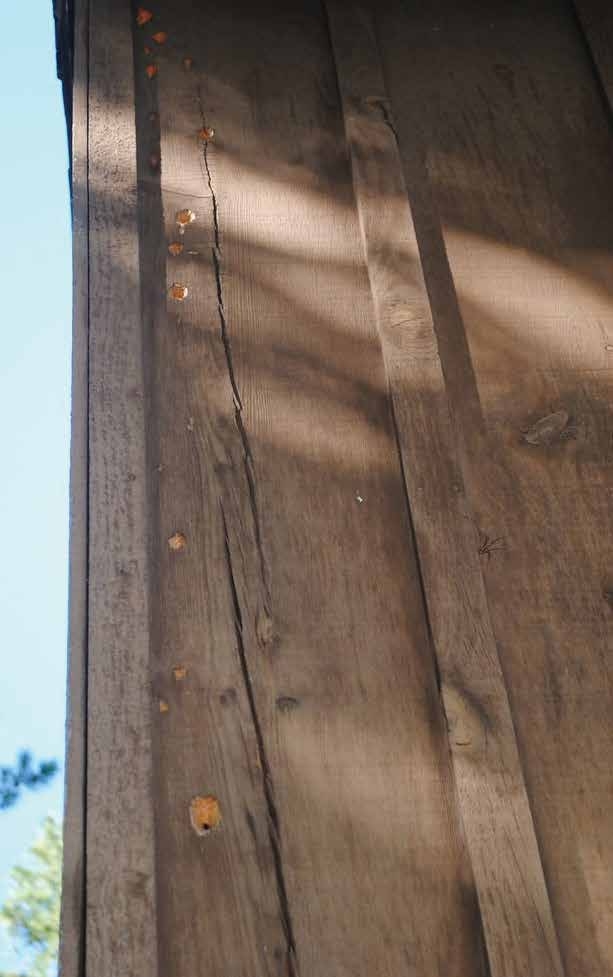
Figure 5: Illustration of damage typical of that inflicted by foraging woodpecker. (Photo is licensed under CC BY-NC-ND 2.0 dianecordell)
Woodpeckers eat a mix of plant and animal matter. Insects — especially the larval and adult stages of wood-boring insects and those that live on or just under the bark of trees — form the bulk of the diet. During spring and summer, they also consume the berries and fruits of trees and shrubs, but they typically shift to nuts and seeds in late summer and fall. The sapsucker is unique among the woodpeckers in that it drills parallel rows of shallow holes on the trunk of a tree, just deep enough to penetrate the outer layer and reach into the cambium. This allows sap to flow through the opening in the bark and puddle in the depression. The sapsucker then drinks this nutrient-rich fluid (hence the origin of its name) or plucks insects that have been attracted to or become stuck in the sweet liquid. All woodpeckers have a long, flexible, and somewhat sticky tongue that is used to locate and retrieve their prey, such as insects that lie deep inside the tree.
Economic Status and Importance
Ecologically, woodpeckers are important for several reasons. Many insect species we consider undesirable or that represent significant economic pests (such as wood-boring or wood-eating insects) are preferred foods of woodpeckers. The larval stage of such insects, especially, serves as the meat and potatoes for young birds being reared in a cavity. Because of their persistence and success in finding these tasty morsels, woodpeckers and other birds and small mammals help to reduce populations of these potentially devastating insects.
As noted earlier, woodpeckers can inflict substantial economic impact annually on utilities in terms of repair and/or replacement costs for wooden utility poles.
Recent industry estimates of damage ranged from having to replace about 200-300 poles per year (at a cost of $250,000 each) in San Francisco to as much as $3 million per year within the service region of Alabama Power Company. Here in Virginia, consultants for electric utilities estimate that 10% of all power pole failures were due to woodpecker damage. Replacement costs for transmission poles (including material and installation) can range from $300 to $3,000 per pole, depending on length and composition of the pole and its location on the landscape (Harness and Walters 2005).
Management Options and Strategies
Like most songbirds, all woodpeckers found in Virginia officially are classified as nongame species, and this designation gives them full protection under federal and state law, code, and/or regulation. Even though some woodpecker species do not migrate, they still fall under the jurisdiction of the federal Migratory Bird Treaty Act of 1918, which prohibits the “take” of any individual without prior authorization (i.e., permit) from the U.S. Fish and Wildlife Service. Similarly, under Virginia wildlife regulations (4VAC15-30-10), woodpeckers are protected from unauthorized take. Further, it is illegal for anyone, other than authorized and permitted rehabilitators or wildlife agents, to possess a nongame bird. Therefore, in situations that involve nongame birds, it is best to obtain the services of someone with proper authority and the skills to handle such species.
Although each woodpecker species displays unique characteristics that distinguish it from others, for the purposes of resolving common conflict situations, the discussion of resolution options for these species will be treated generically for all woodpeckers unless specifically noted. The discussion of options also follows an integrated pest management approach, which starts with simple, inexpensive methods and — should those methods not achieve the desired level of resolution — moves on to more complex and costly methods and ends with lethal options as a last resort. Those affected by a woodpecker problem should follow this approach as well — never start with complex, elaborate techniques because you may invest more time, money, or effort in resolution than is necessary. Most importantly, though, remember that lethal techniques should always be viewed as methods of last resort.
Husbandry
Husbandry options seek to accomplish two outcomes: a change in the physical characteristics of an area such that an animal no longer feels comfortable being there or cannot find what it needs to survive, or the modification or elimination of human behaviors or activities that foster undesirable interactions with an animal. To achieve the first outcome, homeowners often try to remove or limit food and water resources available to the animals in question, or they attempt to alter the habitat in ways that reduce or eliminate other essential habitat components. Unfortunately, there is often little a homeowner can do (on a practical level) to effectively reduce the vital habitat elements their property provides to woodpeckers, aside from removing all the trees. A prominent exception to this would be the removal of supplemental food that may be attracting woodpeckers, such as food provided by bird feeders, especially ones that provide suet or peanut butter. By discontinuing such feeding activities, birds within the immediate area that previously used those feeders will then shift over to naturally occurring food resources; this often results in a lower, but more natural, local bird density.
Another important task homeowners should perform regularly is to inspect the home for any signs of wood-boring or other insects that could attract woodpeckers. In addition to protecting the structural integrity of the building, routine professional home inspections help detect their presence and allow for proper treatment of such insects before woodpecker damage occurs.
Certain types of siding are known to be more prone to insect infestation than others, so homeowners need to become better informed when making decisions about the siding they choose and its proper care and maintenance. Laminate products (e.g., T1-11 plywood) and heavily textured surfaces (e.g., whole log or faux log siding, board and batten, redwood or cedar shingles, shakes, and/or clapboards) provide spaces or often contain voids where insects can lay eggs or crawl into/under and hide. Woodpeckers are very good at detecting the presence of insects in or under these surfaces. Thus, it is important to perform regular inspections to detect insect presence, treat suspected infestations, fill any void and eliminate exposed openings where insects can gain access to these inner recesses.
Recent research (Harding, Curtis, and Vehrencamp 2007) has found that both the type and the color of sheathing used on a home influences woodpecker activity. Homes sheathed in cedar siding appear to be very attractive to woodpeckers, especially as potentially suitable sites for cavity excavation. Further, homes painted or stained in dark earth tones or natural wood colors experienced a higher incidence of woodpecker activity than did homes painted in bright or light colors (e.g., white, pastel yellow or cream, light blue). Condition of the colored sealant (i.e., its age or state of deterioration) did not seem to affect woodpecker response. Darker-colored homes consistently experienced greater activity than lighter-colored homes, regardless of the state of weathering of the paint/stain covering. When exterior upgrades or restoration work is needed, homeowners who live in wooded neighborhoods should seriously consider the color of paint or stain they select because it often will be an influencing factor to potentially damaging woodpecker activity.
Nonlethal Techniques
Techniques in this category usually aim to accomplish one of two things: prevent an animal’s access to certain areas through use of a physical barrier or change the animal’s behavior by scaring it and triggering its escape or flight response. In most cases, some form of a physical device, a visual or auditory deterrent, or a repellent will be used.
Exclusion and physical barriers – Where woodpeckers are causing substantial physical damage to a structure, the affected area can be draped with plastic or polyurethane netting material. Attach sections of netting vertically beneath the eaves and secure it below the zone where damage has occurred, but be sure that the net falls away from the wall — netting that lies against a wall surface will not stop the damage as birds will peck through the mesh. The best approach is to fasten the upper end of the net to the outer edge of the eave and then drape it at an angle toward the building and fasten it at the base of the siding. Mesh size should be 5/8 inch or smaller. Be sure to secure each edge so birds cannot get behind the netting. In certain instances, the placement of netting can encourage a territorial bird to simply move to an unprotected section of the building; be ready to immediately treat those areas before damaging behavior becomes established in the new location.
Fortunately, such an elaborate response is usually not needed if the bird seems to show interest in only one or two areas. However, as noted earlier, first determine whether the bird’s interest is related to the presence of insects in or under the siding before applying barriers discussed below; if insect presence is noted, treat and/or correct that problem first.
Where woodpeckers are penetrating the siding, a section of high-quality, fine-meshed hardware cloth or other metal grid material can be fastened temporarily over the areas being pecked. Metal sheathing or flashing material can sometimes be effective as a temporary barrier, but these materials could create a new sounding board for the woodpecker. Extend the barrier at least 6-12 inches beyond the area of damage on all sides; otherwise, the bird will likely just move over and resume its activity. When the damage stops, remove the coverings and make permanent repairs.
Likewise, sapsucker damage on valued ornamental trees or shrubs can be addressed by loosely wrapping the affected section(s) of the trunk with fine-meshed hardware cloth. You may have to be persistent because these birds often try other sections of the same tree before moving on. This approach would be feasible only for a small number of valuable ornamental plants; it obviously is neither a practical nor a cost-effective method of preventing damage to large trees or stands of timber.
Visual deterrents – Stationary scare devices, such as rubber snakes, plastic owl effigies, or predator eye-spot balloons generally do little to deter woodpeckers. You might notice an immediate drop in a bird’s presence or activity level right after placing one of these objects near the damaged site, due primarily to the uniqueness of a new object in the bird’s territory, but that effect will often be temporary at best. Birds quickly habituate to devices that do not move or change position, often in as little as one to two days, because they present no immediate perceived threat and simply will be ignored. However, objects placed in an area of damage that incorporate movement sometimes offer better deterrence. Examples of some common approaches that incorporate movement include hanging a cut-out silhouette of a falcon or hawk in flight, a discarded CD disk, or strips of metallic reflective or holographic tape (e.g., Irri-Tape®) near the center of the area where damage is occurring. Monofilament fishing line is useful for attaching these items under the eave and allowing them to swing freely. These deterrents rely on the wind to move the object across the affected area or — in the case of reflective objects — move the object in ways that catch and deflect the sun’s rays. Greatest success is achieved when these devices are employed immediately at the first signs of bird activity. Once the behavior is established, it is more difficult to stop.
Auditory deterrents – The use of various projected sounds to deter woodpeckers has been tried time and time again but usually offers only temporary relief. If someone can consistently be present when a bird first starts to cause damage, making loud noises occasionally may be sufficient to deter a woodpecker. However, because people cannot always be available to monitor the bird’s presence, they often resort to using devices that produce continuous noise in their absence (e.g., radios, high-frequency or ultrasound emitters, distress or predator call playback devices). Birds quickly habituate to these sounds because they play continuously and rarely are associated with the bird’s behavior (i.e., activates upon its arrival). Motion-detection-activated devices can sometimes extend the initial perceived threat for a period of time, but unless that perception is backed up by some form of periodic real threat, birds eventually will habituate to the sound and ignore it. For these reasons, auditory deterrents typically provide only very temporary relief at best.
Repellents – Methyl anthranilate is the only product currently registered for use on woodpeckers by the U.S. Environmental Protection Agency, but Belant et al. (1997) found this repellent did not deter woodpeckers from damaging treated wood surfaces. Even in the utility industry, where support poles often have been treated with chemical wood preservatives or other products to protect them from insects and decay (e.g., creosote, chromated copper arsenate [CCA]), little evidence of successful deterrence of woodpeckers has been found. However, anecdotal evidence from an investigation of pole treatments used by utilities here in Virginia hinted that wooden poles treated with Chemonite (ammoniacal copper zinc arsenate) preservative exhibited 71% less damage attributed to woodpeckers than all other forms of treatment (Brucato 1994). Despite the fact that topical repellents have not proven useful in deterring woodpecker damage due primarily to birds having a poor sense of smell and taste, additional research may be warranted to further investigate the potential usefulness of repellents like Chemonite.
Harassment – An effective technique, but one often challenging to administer, is to direct a stream of water at a bird actively causing damage. A powerful blast of water from a garden hose directed at a woodpecker every time it starts to peck usually can curtail that undesirable activity. This quick burst of water wets the bird and causes it to focus on the source of the water instead of what was its primary interest. You must be ready to move around the building as the bird changes location, but with persistence, you can often make the bird give up. There are two obvious limitations with this approach: (1) someone must be present continuously to administer the water blast as needed, and (2) if the damaging behavior already has become well-established, it will be harder to scare the woodpecker away. This water blast application must be administered at the first signs of activity to achieve maximum effectiveness.
Lethal Techniques
Given the current classification and status of woodpeckers (i.e., nongame, protected), lethal options typically are not available to the general public. Before anyone would be allowed to take (kill) a woodpecker that is causing damage, a permit authorizing such action would be needed from both the U.S. Fish and Wildlife Service and from the Virginia Department of Wildlife Resources. In most cases, these agencies will not issue such a permit without justification, namely that all other options have been tried by the affected owner and all have failed.
In those cases where nothing else works and significant damage continues, individuals who are trained and hold the necessary removal and possession permits may attempt to capture the offending individual. However, relying on removal as a means to achieve long-lasting relief is rarely effective. Another individual will often fill the void soon after the original bird is removed, especially if the territory previously occupied still provides desirable and attractive features to other woodpeckers.
Summary
As suggested by Harding, Curtis, and Vehrencamp (2007), the best long-term approaches to minimizing or avoiding negative woodpecker interactions include removing supplemental food resources that may attract birds to the area of the residence and paying close attention to the type and color of the sheathing used on the home. Dark earth-tone colors should be avoided, especially in heavily wooded neighborhoods. Regular and thorough home inspections to detect the presence of insect infestations may also help eliminate conditions that could lead to future foraging damage inflicted by woodpeckers. Although many forms of physical deterrents are available commercially, few have been found to provide lasting relief from persistent woodpecker activity. Highly reflective devices that incorporate motion often demonstrate better deterrence than stationary visual threats or sound-producing devices. Except in rare circumstance, lethal removal of an annoying woodpecker would not be a legal form of conflict resolution.
Additional useful information about the lives and habits of these birds can be obtained from the following online resources:
- Virginia Department of Wildlife Resources – https://dwr.virginia.gov/wildlife/nuisance/woodpeckers/
- The Cornell Laboratory of Ornithology -https://www.allaboutbirds.org/news/why-do-woodpeckers-like-to-hammer-on-houses-and-what-can-i-do-about-it/
- Marsh, R. E. 1994. “Woodpeckers.” In Prevention and Control of Wildlife Damage, edited by S.E. Hygnstrom, R. M. Timm, and G. E. Larson, E139-E145. Lincoln, NE: University of Nebraska. Available at https://digitalcommons.unl.edu/icwdmhandbook/75/
- Peterson, R. T., and V. M. Peterson. 2002. A Field Guide to the Birds of Eastern and Central North America. 5th ed. Boston: Houghton Mifflin.
References
Belant, J. L., T. W. Seamans, R. A. Dolbeer, and P. P. Woronecki. 1997. Evaluation of methyl anthranilate as a woodpecker repellent. International Journal of Pest Management 43:59–62.
Brucato, M. 1994. “Reduced Woodpecker Damage in ACZA Treated Utility Poles.” Presentation to the American Wood Preservers’ Association. Proceedings of the 90th Annual Meeting of the AWPA 90:114-18.
Harding, E. G., P. D. Curtis, and S. L. Vehrencamp. 2007. “Assessment of Management Techniques to Reduce Woodpecker Damage to Homes.” Journal of Wildlife Management 71 (6): 2061-66.
Harness, R. E., and E. L. Walters. 2005. “Knock on Wood: Woodpeckers and Utility Pole Damage.” IEEE Industry Applications Magazine 11 (2): 68-73.
Virginia Cooperative Extension materials are available for public use, reprint, or citation without further permission, provided the use includes credit to the author and to Virginia Cooperative Extension, Virginia Tech, and Virginia State University.
Virginia Cooperative Extension is a partnership of Virginia Tech, Virginia State University, the U.S. Department of Agriculture (USDA), and local governments, and is an equal opportunity employer. For the full non-discrimination statement, please visit ext.vt.edu/accessibility.
Publication Date
May 4, 2022



